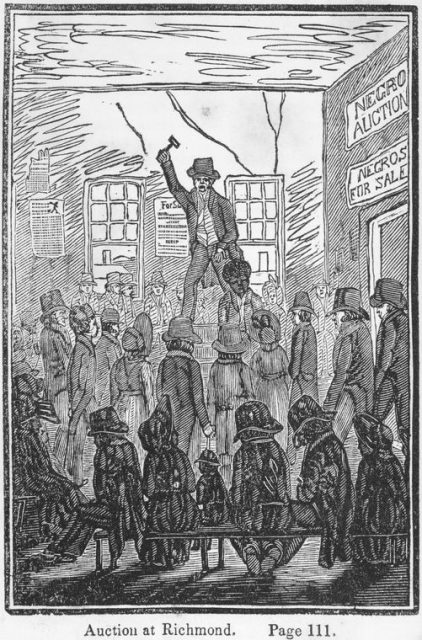Politics, it has been said (by me, I think), is the art of the hardly possible. One demands, or promises, things that cannot be delivered in this world, and that no one could want if they thought through the consequences. The successful politician does not lie, except when cornered. Rather, he fantasizes, “dreams,” and seeks a constituency that will dream with him. To my mind, Barack Obama was near to the perfect politician, and while lacking his class and cunning, Canada’s child prime minister, “Justine” (see the 4,000-page novel by the Marquis de Sade), has attempted to offer the same billboard attractions. It is what all modern capitalism has aspired to: nothing, in a very spiffy package; a triumph of pure advertising.
The perfect politician, as the perfect salesman, sells this “vision” — dwarfing any specific programme with its stated assumptions and checkable facts. Details, details; to the uninitiated, these are always boring, and the voting masses will never be initiated. The people, especially in this Age of Netflix, want entertainment, and what they call “leadership.” A leader is a person who does your thinking for you. In politics, he has a rôle like that of film director, in a movie where he will be the principal star. We must go through the movie emotionally on his side; grieve his little setbacks, feel that we participate when he wins. Black hats, white hats: his opponents are clearly marked and can be seen at every moment to be deplorable.
David Warren, “Now playing”, Essays in Idleness, 2018-07-13.
October 29, 2020
October 28, 2020
Who were the Assyrians? History of the Assyrian Empire
Epimetheus
Published 12 Dec 2018Who were the Assyrians? The entire history of the Ancient Assyrian Empire explained in 11 Minutes.
Support new videos from Epimetheus on Patreon! 😀
https://www.patreon.com/Epimetheus1776History of Assyria from its founding, Shamshi Adad, Tiglath Pileser III, Sargon, Ashurbanipal to the fall of Ninevah and the Assyrian Empire.
QotD: The Gurkhas
For 20 years between the wars [Field Marshal Viscount Slim] was a Gurkha officer, as so many of the 14th Army’s fighting generals were. Indeed, for a time, they were known on the front as the “Mongol Conspiracy.” Slim loves the Gurkhas, whose language he speaks. His favourite stories are of Gurkhas. He tells of the paratroopers who were to jump at 300 feet. As they had never jumped before, their Havildar [Sergeant] asked if they might go a little nearer the ground for their first jump. He was told that this was impossible because the parachutes would not have time to open. “Oh,” said the Gurkha, “so we get parachutes, eh?”
October 27, 2020
America’s “brutal system of slavery [was] unlike anything that had existed in the world before”
I missed this article by Kay S. Hymowitz when it was published by City Journal a couple of weeks back:

Auction at Richmond. (1834)
“Five hundred thousand strokes for freedom ; a series of anti-slavery tracts, of which half a million are now first issued by the friends of the Negro.” by Armistead, Wilson, 1819?-1868 and “Picture of slavery in the United States of America. ” by Bourne, George, 1780-1845
New York Public Library via Wikimedia Commons.
… slavery was a mundane fact in most human civilizations, neither questioned nor much thought about. It appeared in the earliest settlements of Sumer, Babylonia, China, and Egypt, and it continues in many parts of the world to this day. Far from grappling with whether slavery should be legal, the code of Hammurabi, civilization’s first known legal text, simply defines appropriate punishments for recalcitrant slaves (cutting off their ears) or those who help them escape (death). Both the Hebrew Bible and the New Testament take for granted the existence of slaves. Slavery was so firmly established in ancient Greece that Plato could not imagine his ideal Republic without them, though he rejected the idea of individual ownership in favor of state control. As for Rome, well, Spartacus, anyone?
In the ancient world, slaves were almost always captives from the era’s endless wars of conquest. They were forced to do all the heavy labor required for building and sustaining cities and towns: clearing forests; building roads, temples, and palaces; digging and transporting stone; hoeing fields; rowing galley ships; and marching to almost-certain death in the front line of battle. Women (and often enough boy) slaves had the task of servicing the sexual appetites of their masters. None of that changed with the arrival of a new millennium. Gaelic tribes took advantage of the fall of the Roman Empire to raid the west coast of England and Wales for strong bodies; one belonged to a 16-year-old later anointed St. Patrick, patron saint of Ireland. “In the slavery business, no tribe was fiercer or more feared than the Irish,” writes Thomas Cahill in How the Irish Saved Civilization.
Today, of course, the immorality of slave-owning is as clear as day. But in the premodern world, no neat division existed between evil slaveowners and their innocent victims. Once the Vikings arrived in their longboats in the 700s, the Irish enslavers found themselves the enslaved. Slavery became the commanding height of the Viking economy; Norsemen raided coastal villages across Europe and brought their captives to Dublin, which became one of the largest slave markets of the time. The Vikings thought of their slaves as more like cattle than people; the unlucky victims had to sleep alongside the domestic animals, according to the National Museum of Denmark in Copenhagen. Norsemen rounded up captured Irish men and women to settle the desolate landscape of Iceland; scientists have found Irish DNA in present-day Icelanders, a legacy of that time. The Slavic tribes in Eastern Europe were an especially fertile supplier for Viking slave traders as well as for Muslim dealers from Spain: their Latin name gave us the word slave. Slavs were evidently not deterred by the misery they must have suffered; when Viking power waned by the twelfth century, the Slavs turned around and enslaved Vikings as well as Greeks.
Slavery was a normal state of affairs well beyond the territory we now call Europe. The Mayans had slaves; the Aztecs harnessed the labor of captives to build their temples and then serve as human sacrifices at the altars they had helped construct. The ancient Near East and Asia Minor were chockfull of slaves, mostly from East Africa. According to eminent slavery scholar Orlando Patterson, East Africa was plundered for human chattel as far back as 1580 BC. Muhammad called for compassion for the enslaved, but that didn’t stop his followers from expanding their search for chattel beyond the east coast into the interior of Africa, where the trade flourished for many centuries before those first West Africans arrived in Jamestown. Throughout that time, African kings and merchants grew rich from capturing and selling the millions of African slaves sent through the Persian Gulf and Indian Ocean to Persians and Ottomans.
From the fifteenth to the eighteenth centuries, the North African Barbary coast was a hub for “white slavery.” This episode was relatively short-lived in the global history of slavery, but one with overlooked impact on Western culture. Around 1619, just as the first Africans were being sailed from the African coast to Jamestown, Algerian and Tunisian pirates, or “corsairs” as they were known, were using their boats to raid seaside villages on the Mediterranean and Atlantic for slaves who happened in this case to be white. In 1631, Ottoman pirates sacked Baltimore on the southern coast of Ireland, capturing and enslaving the villagers. Around the same time, Iceland was raided by Barbary corsairs who took hundreds of prisoners, selling them into lifetime bondage.
What Happened 100 Years Ago? – October 1920 I THE GREAT WAR
The Great War
Published 26 Oct 2020It’s time for our monthly summary of the events 100 years ago.
» SUPPORT THE CHANNEL
Patreon: https://www.patreon.com/thegreatwar» OUR PODCAST
https://realtimehistory.net/podcast – interviews with World War 1 historians and background info for the show.» BUY OUR SOURCES IN OUR AMAZON STORES
https://realtimehistory.net/amazon *
*Buying via this link supports The Great War (Affiliate-Link)» MORE THE GREAT WAR
Website: https://realtimehistory.net
Instagram: https://instagram.com/the_great_war
Twitter: https://twitter.com/WW1_Series
Reddit: https://reddit.com/r/TheGreatWarChannel»CREDITS
Presented by: Jesse Alexander
Written by: Jesse Alexander
Director: Toni Steller & Florian Wittig
Director of Photography: Toni Steller
Sound: Toni Steller
Editing: Toni Steller
Motion Design: Philipp Appelt
Mixing, Mastering & Sound Design: http://above-zero.com
Maps: Daniel Kogosov (https://www.patreon.com/Zalezsky)
Research by: Jesse Alexander
Fact checking: Florian WittigChannel Design: Alexander Clark
Original Logo: David van StepholdContains licensed material by getty images
All rights reserved – Real Time History GmbH 2020
Conspiracy theories grow thanks to mistrust of public officials and media
It’s commonplace to say that such-and-such a conspiracy theory is merely an intellectual playground for the paranoid and the gullible, but conspiracy theories don’t spontaneously generate — at least not the ones that gain wide audiences. Daniel Miller looks at some of the reasons these theories become attractive and gain adherents:
In the wake of six months of mixed-messages and baffling government policies, following four years, if not twenty years, of mystifying imponderables, the concept of a “conspiracy theory” has recently reentered the lexicon of semi-criminalized thought.
In August The New York Times stigmatized anti-lockdown protesters in Berlin as a worrying admixture of “neo-Nazi groups, conspiracy theorists as well as Germans who said they were fed up with the restrictions” and similar language was used about the protesters in London, as social media companies began purging accounts linked to the QAnon conspiracy theory, which conjectures that the world is controlled by a secret global cabal of blood-drinking sex criminals.
Believing conspiracy theories, evidently, is a Bad Thing, but any concept capacious enough to incorporate both the tens, even hundreds of millions of people skeptical about the global political response to SARS-2, and the much smaller number entertaining more involved explanations demands a careful analysis.
Really the first question is who you can trust. One answer is the official authorities, as represented by the esteemed New York Times, but the news website which welcomed the 45th US President to office with three years of spurious coverage of what turned out to be the Russiagate hoax, before pivoting to the historical phantasmagoria of the 1619 Project, no longer strikes everyone as the impeccable source which revealed the existence of Saddam Hussein’s WMD stockpile and links to Al-Qaeda before the 2003 invasion of Iraq, or whose Pulitzer Prize winning journalist Walter Duranty discounted rumours of a 1933 famine in the Soviet Union as “an exaggeration or malignant propaganda.”
This leaves individuals only to their own wits and devices in the face of a puzzling world in which information is everywhere, much of it questionable, not all the facts are available, and many are ultra-politicized, and meanwhile, unknown agendas are being continually carried out.
What’s really going on? As with any speculative enterprise, the problem is to construct a plausible hypothesis by using various models to interpret limited data. There is no question that, at different moments in history, individuals and groups have worked together in secrecy to launch conspiratorial exploits and there is no obvious reason for thinking this practice has now totally ceased. “People of the same trade seldom meet together,” observed Adam Smith in 1776, “even for merriment and diversion, but the conversation ends in a conspiracy against the public.” Still, this is not in itself evidence of any specific plot happening now.
Retire your dusty belt sander! Cambered plane irons work!
Stumpy Nubs
Published 27 Jul 2020End your planing frustration, say goodbye to belt sanders, make shavings instead of dust!
Useful links to resources mentioned this video►
Kodiak sharpening system: https://woodturnerswonders.com/collec…
Kodiak tool rest: https://woodturnerswonders.com/collec…
CBN Grinder wheels: https://woodturnerswonders.com/collec…
Simple sharpening jig: https://amzn.to/2wtlakq
1000 grit diamond stone: https://amzn.to/2LPNKmAWhen you use this link to visit our sponsor, you support us►
Woodturners Wonders https://woodturnerswonders.com/Subscribe (free) to Stumpy Nubs Woodworking Journal e-Magazine► http://www.stumpynubs.com/subscribe.html
Follow us on social media►
Instagram: https://www.instagram.com/stumpynubs/
Twitter: https://twitter.com/StumpyNubs
QotD: Trader Joe’s
Remember grocery shopping? You might not have done it in a while, at least in person. But one place that’s fun to shop is Trader Joe’s. Describing itself as “your neighborhood grocery store,” Trader Joe’s has some pretty good products at pretty good prices. It’s the place to go if you like Whole Foods but you can’t afford Whole Foods. The vibe is laid back, the staff is always friendly, there are fun little oddities you can’t get anywhere else, and it has inexpensive but almost always drinkable booze. Usually the biggest problem with shopping at TJ’s is navigating through the crowd of rude liberals who don’t think they need to be civil to other people in real life because they donate to Greenpeace and the Sierra Club.
Jim Treacher, “Trader Joe’s Apologizes for Being Racist”, P.J. Media, 2020-07-20.
October 26, 2020
Kathy Shaidle tells the story of Hamilton’s 1970s cult children’s TV show
I still have fond memories of CHCH TV’s Hilarious House of Frightenstein and Kathy Shaidle clearly does too:
The Hilarious House of Frightenstein was produced in 1971 by our one and only TV station, CHCH. This hour-long, 130-episode kids’ show combined the mid-century sensibility of Famous Monsters of Filmland with the then-hip look and sound of psychedelia: kaleidoscopic “special effects” plus Top 40 hits spun by “The Wolfman,” an affectionate rip-off of legendary DJ Wolfman Jack.
The show’s “plot” concerned a banished count’s attempts to revive his comatose monster, Brucie, but that was just a flimsy excuse to mount a fast-paced series of corny sketches, semi-serious “educational” segments, and — years before The Simpsons and Pixar — “over the kids’ heads” jokes aimed at adults who might find themselves awake at dawn, or earlier.
The part that always puzzled me as a kid was that a local southern Ontario low-budget TV show for kids had international movie star Vincent Price in it. Kathy explains how it happened:
Older and “uncool” (despite receiving the imprimatur of another rising Hollywood director, Roger Corman), Price was out of fashion.
At the same time, CHCH had a limited budget, but wanted and needed some star power for their single camera kid’s show.
Who better to host this “monster mash” than Vincent Price, still one of the all-time great horror-movie icons?
Frightenstein‘s producer tracked down Price, who agreed to work for $3000 a day, one quarter of his usual per-diem appearance rate.
He loved children, he explained simply. And the gig sounded like fun.
CHCH checked their tiny budget. They could only afford Price for four days, tops.
Four days it would have to be.
Everyone signed on the dotted line.
I’ve heard the story of what happened next from different sources, and it never ceases to warm my heart:
Price arrived at the modest TV studio, got into makeup and costume and was handed reams of doggerel poems about some crazy characters he’d never heard of before.
He’d read each piece once, put his head down, then look up at the camera’s red light and utter his lines perfectly in one take.
Next!
New makeup, new costume, same perfect delivery, hour after hour.
Finally, it was time for a break. The weary yet exhilarated crew turned off the cameras and lights.
Then they looked around and realized that Vincent Price had disappeared.
Oh well, they said to each other, what do you expect? He’s a big star and all. Plus he’s, like, 60 years old, so he probably went for a nap…
The studio door opened a few minutes later.
It was Vincent Price and a cab driver, hauling “two-fours” of beer from the nearby Brewer’s Retail.
He handed cold stubbies out to the cast and crew and regaled them with tales of old Hollywood, his days working with Karloff and Peter Lorre and Gene Tierney and Cecil B. DeMille and all the other greats he’d known.
Classic Imperial British Revolvers: the Webley WG Army and Target
Forgotten Weapons
Published 19 Aug 2018http://www.patreon.com/ForgottenWeapons
Cool Forgotten Weapons merch! http://shop.bbtv.com/collections/forg…
The Webley company used the “WG” (Webley Government) nomenclature in its literature starting in 1883, but the first revolver actually marketed as such was the WG Model of 1889. These revolvers were made primarily for the military market, as officers were responsible for supplying their own sidearms in the British military until 1915. The WG was a full size service revolver in .455 caliber (accepting a wide variety of .45 inch British cartridges, including the .450, .455, .476, Enfield Mk II, and Enfield MkIII). A series of refinements would be made to the design culminating in the generally-accepted standard WG pattern in 1896. These would be produced until 1902, when they were replaced by the Webley WS (Webley Service).
The two main variation of the WG were the Army and the Target. The Army typically had a bird’s-head grip and a 6 inch barrel, where the Target had a longer 7.5 inch barrel and a flared square-butt grip, as well as adjustable sights. However, Webley was happy to supply and mix of features to a customer, and many branded patterns exist. The Target pattern proved very successful for shooters at the Dublin, Glasgow, and Wimbledon matches of the period. A total of about 22,000 WG pattern revolvers were made, with the “standard” 1896 model appearing around s/n 10,000.
Contact:
Forgotten Weapons
6281 N Oracle #36270
Tucson, AZ 85704
October 25, 2020
Canada’s broken [REDACTED] to [REDACTED] [REDACTED]
In The Line, a look at the failings of the federal government’s promises to fix the badly broken Access to Information system:
Sometimes, Line readers, though we always strive to be fair, we cannot deny that certain politicians are just fun to skewer. Because some of them are just terrible, terrible people, and while we polite Canadians don’t normally report too much on the personal lives of our elected leaders, well, what can we say? When you can, within responsible journalistic bounds, give a dirtbag a hard time for falling down on the job, hey. Life is good!
Patty Hajdu, the federal minister of health, is actually … perfectly pleasant. This isn’t unheard of in our politicians, but it’s rare enough to mention here, all to make very clear that we take no particular pleasure in reporting on her pathetic performance this week. But report it we must. And pathetic it surely was.
Under sharp questioning by Tory MP Michelle Rempel Garner, Hajdu very carefully and deliberately aimed a soon-to-be-banned .44 Magnum revolver at her foot, waited a dramatic second for effect, and then figuratively blew her poor extremity to smithereens. Rempel Garner had been asking about the abysmally broken state of the federal access-to-information systems, and Hajdu, with all-too-Liberal scorn, stood up and declared:
Mr. Speaker, I have spoken to hundreds, if not thousands, of Canadians since the pandemic was first announced, when COVID-19 arrived on our shores. In fact, not once has a Canadian asked me to put more resources into freedom of information officers. What they have asked me for is to ensure that all the resources of Canada are devoted to one thing, and that is the health, safety and economic prosperity of our country. We are going to continue to make sure that Canada has the most robust response possible.
There are two gigantic problems with Hajdu’s answer there.
The first is that Canada’s access-to-information regime is notoriously dysfunctional, and her government has long admitted that. Indeed, fixing this disgrace was a major plank in the party’s 2015 platform.
In the years since, the government has effectively accomplished the square root of zero.
The Crimes of Madame Delphine LaLaurie: The Truth Behind the Legends
Atun-Shei Films
Published 16 Dec 2019Madame Delphine LaLaurie, New Orleans’ most reviled serial killer, has become world famous thanks to American Horror Story and the wildly popular French Quarter ghost tour industry. The story of this deranged socialite who tortured, mutilated, and murdered her slaves has lost none of its horrifying bite, and the supposedly haunted mansion where her home once stood has become a major tourist attraction. Despite its popularity (or perhaps because of it), this story is steeped in legend and folklore. Most online sources about LaLaurie’s crimes are outdated, wrong, or both. In this video I attempt to separate the truth from the myth, and tell a purely historical account of the crimes of Delphine LaLaurie.
Support Atun-Shei Films on Patreon ► https://www.patreon.com/atunsheifilms
#MadameLaLaurie #NewOrleans #History
Watch our film ALIEN, BABY! free with Prime ► http://a.co/d/3QjqOWv
Reddit ► https://www.reddit.com/r/atunsheifilms
Twitter ► https://twitter.com/atun_shei
Instagram ► https://www.instagram.com/atunsheifilms
Merch ► https://atun-sheifilms.bandcamp.com














